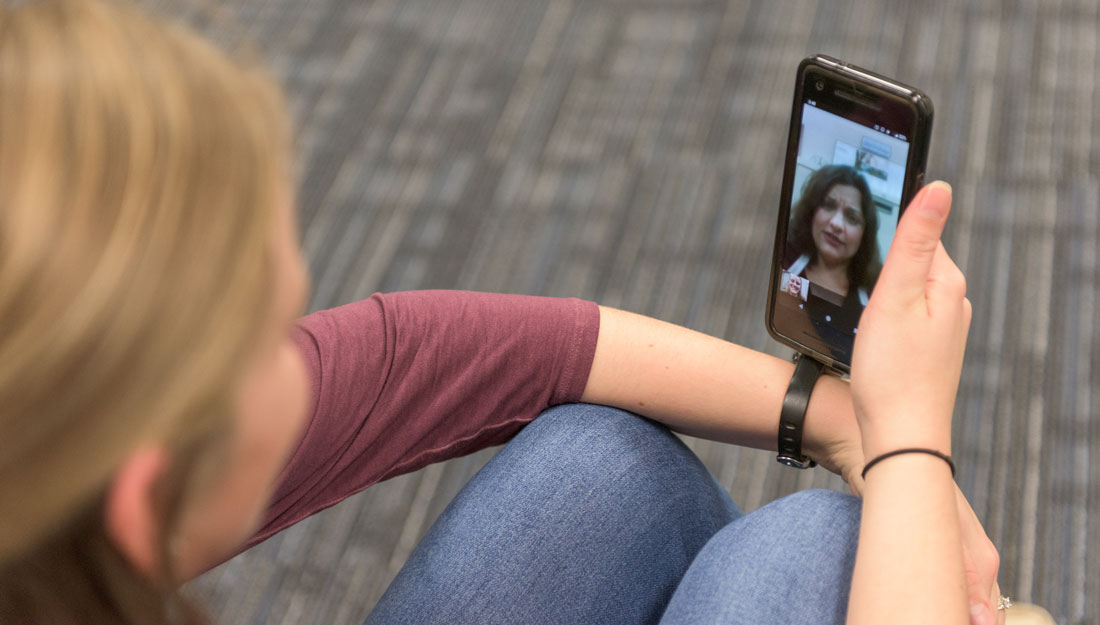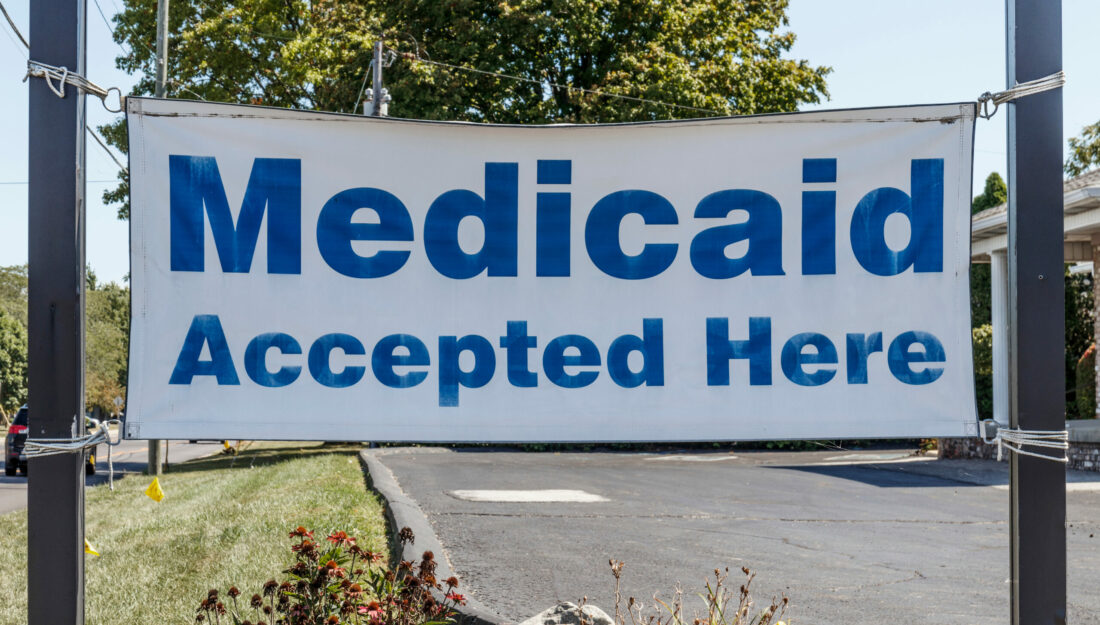- Lindsey Hendrix
- COVID-19, Medicine, Show on VR homepage
How Texas A&M Health is providing safe, personal care for Texans during social distancing
Virtual services, including telemedicine, allow Texas A&M Health providers to care for patients at home

The current pandemic has impacted just about every aspect of American life, but perhaps none more than the health care system. While health professionals fight COVID-19 on the frontlines, they are also continuing to ensure health care needs unrelated to the virus remain uninterrupted. After all, mental health and chronic ailments like diabetes, hypertension, high cholesterol and arthritis—as well as medical emergencies—don’t stop because of a viral outbreak.
At Texas A&M Health Family Care clinics, patients are able to get the regular health care they need while keeping the number of patients in and out of the clinic to a minimum thanks to their new virtual “e-visits.” Patients can utilize e-visits through either a phone consultation or video call.
“Since the COVID outbreak, we have continued to provide uninterrupted comprehensive primary care services in person and online,” said Leslie Jebson, executive director of clinical services at the Texas A&M University Health Science Center (Texas A&M Health).
Commonly known as “telemedicine,” virtual care allows clinicians to see patients without physically being in the same room. Most assessments and follow-up visits can be completed through video visits, and phone calls can be used for regular check-ins.
“With a little bit of creativity, the vast majority of what we do can be done through telemedicine,” said Katie Blalock, MD, a board-certified family physician at Texas A&M Health Family Care in Navasota. “Through video, I can see if a patient is breathing easily or if they are in any kind of respiratory distress. If there’s a rash or swelling in the legs, they can easily show me that. If they’re having problems with a knee or an ankle, they can show me the range of motion and what the skin looks like to see if there’s swelling or redness. Granted, there are limitations, but we do the best we can.”
For those who do not have access to the technology necessary for a video visit, or if they need a hands-on examination or procedure, clinicians are still available to provide in-person care at the Bryan clinic.
“In general, patients seem to really like the video visit option, especially the rural and older populations we serve,” Blalock said. “I have seen patients through telemedicine from 9 to 101 years old. I’m impressed with how easily some of my older patients are able to log on!”
Telemedicine has allowed Texas A&M Health to provide easier access to care for patients in rural and outlying areas, as well as those who have transportation difficulties or challenges leaving home.
Texas A&M Health Family Care uses a telemedicine platform called Healow. Patients can download the free Healow app and schedule a virtual visit or simply call the clinic location nearest them. Once the appointment has been scheduled, the system sends the patient a text message and email with instructions on how to log on at their scheduled appointment time. At any point during the process, Texas A&M Health clinic staff are available to walk patients through the process to troubleshoot and assist in getting logged in.
“As with anything new, there was definitely a learning curve at the beginning,” Blalock said. “All the physicians and staff practiced on different devices—iPhones, Androids, tablets, laptop and desktop computers—and went through the process with friends and family of all ages. We’ve been doing business this way since Spring Break—when Texas A&M initiated social distancing guidance—so now we know how to troubleshoot just about anything.”
Although federal and state governments have loosened restrictions regarding patient privacy during the COVID-19 pandemic to allow care providers to use common technologies such as Skype and Facetime for virtual care, Texas A&M Health telemedicine is delivered through the nation’s largest and most secure telemedicine system that adheres to the Health Insurance Portability and Accountability Act (HIPAA).
Health providers can address many health concerns through telemedicine and it is a great alternative when in-person care cannot be easily delivered, but Blalock said that nothing can replace face-to-face visits. She also urges patients not to avoid going to hospitals if they are experiencing a medical emergency.
“I have had more patients over the past few weeks who are having stroke-like symptoms or heart attack-like symptoms and are hesitant to go to the emergency room because they fear catching COVID-19,” Blalock said. “There has been a lot of reassuring on my part and counseling patients to absolutely go to the emergency room if they are having a legitimate emergency. Things only get worse if you delay care. Hospitals are equipped to take care of you in a safe manner.”
Media contact: media@tamu.edu


